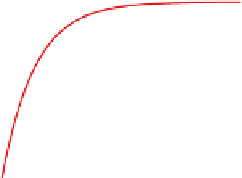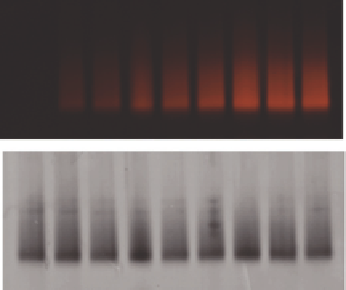Biology Reference
In-Depth Information
Reaction time (min)
S144azF + Alexa 594-DIBO
25
20
15
k
2
= 60 ± 8 M
−
1
s
−
1
10
5
0
0
40
80
120
160
200
Reaction time (min)
FIGURE 15.4
The kinetic study of the strain-promoted alkyne-azide cycloaddition between Alexa
594-DIBO and azF-tagged rhodopsin. (A) The reaction was performed under identical
conditions as described in the experimental section. The initial concentration of Alexa
594-DIBO was 5
m
M. For each time point, 10
m
L of eluted sample was loaded to the
SDS-PAGE gel. The labeled receptor was first visualized by in-gel fluorescence and
then silver stained to determine the relative amount of protein. The intensities of the
fluorescence signals and the silver staining bands were quantified using ImageJ.
The normalized fluorescence intensity (I
F/S) was plotted against the reaction time
and fitted using pseudo first-order kinetic model. The second-order rate constant was
calculated to be 60
¼
8M
1
s
1
.
I
fluorescence
I
silver
The relative signal was plotted against the reaction time to calculate the second-order
rate constant (
Fig. 15.4
).
Relative signal
¼
15.5
PROTOCOL 3: PREPARATION OF BIOTINYLATED
ANTIBODIES
15.5.1
Method 1: biotinylation of periodate-oxidized antibodies with
biocytin hydrazide
15.5.1.1
Materials
Millipore Steriflip
Amicon Ultra (Ultracel 100 K, regenerated cellulose 100 kDa MWCO, 15 mL
device)

































